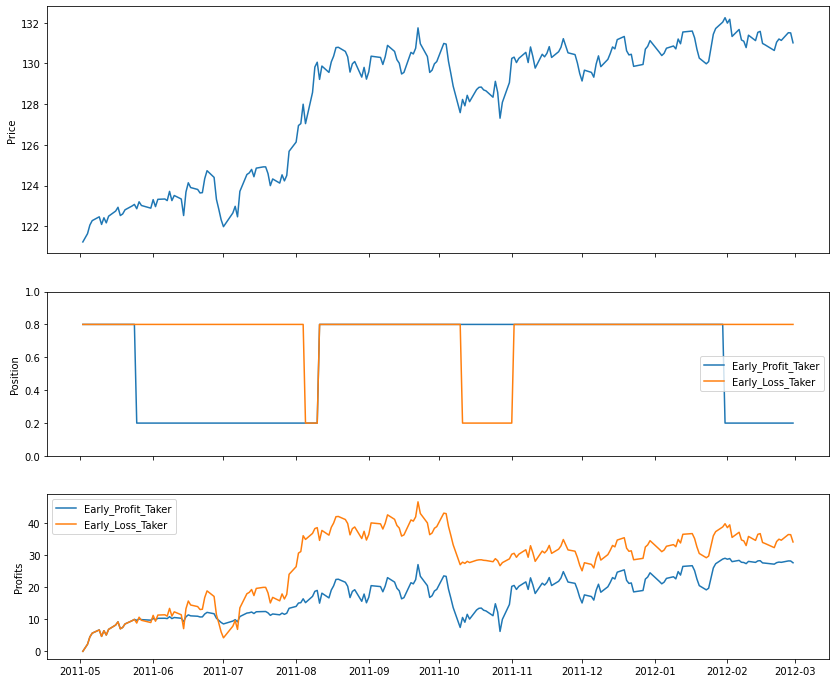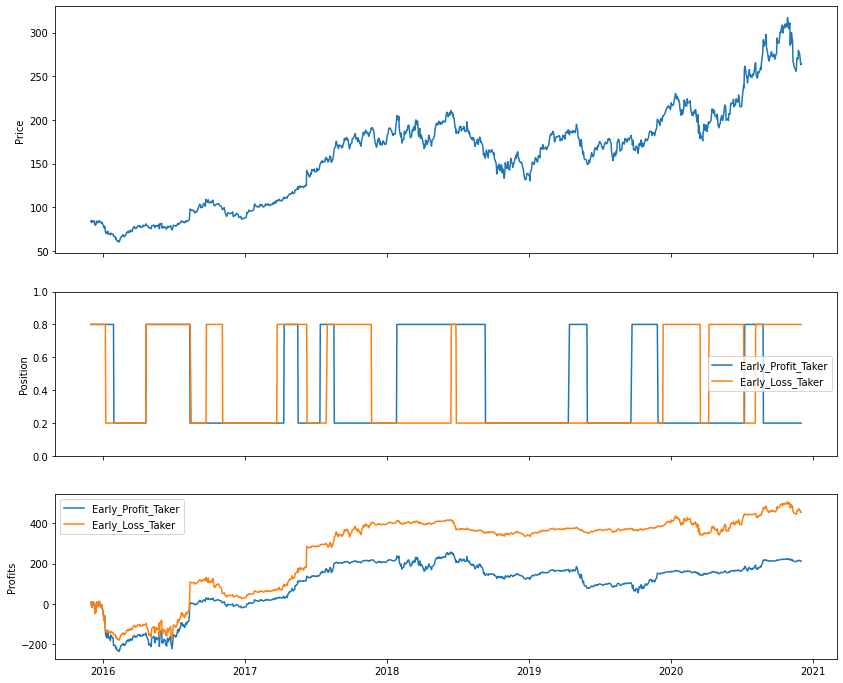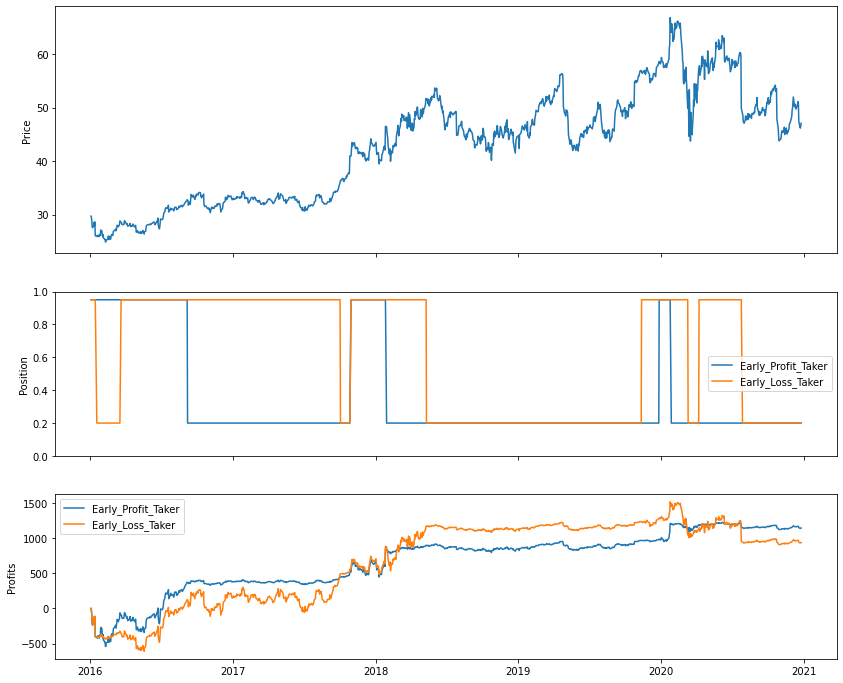1
2
3
4
5
6
7
8
9
10
11
12
13
14
15
16
17
18
19
20
21
22
23
24
25
26
27
28
29
30
31
32
33
34
35
36
37
38
39
40
41
42
43
| def plot_strategy_comparison(
principal = 1e5,
tol_hi = 0.3,
tol_lo = 0.1,
position_hi = 1,
position_lo = 0.1,
data = BABA,
):
position, num_stocks, gain = strategy_modeling(
principal,
'Early_Profit_Taker',
tol_hi,
tol_lo,
position_hi,
position_lo,
data,
)
position_, num_stocks_, gain_ = strategy_modeling(
principal,
'Early_Loss_Taker',
tol_hi,
tol_lo,
position_hi,
position_lo,
data,
)
fig,ax = plt.subplots(3, 1, sharex=True, figsize=(14,12), gridspec_kw={'height_ratios': [3, 2, 2]})
ax[0].plot(data.index, data["Adj Close"])
ax[0].set_ylabel("Price")
ax[1].plot(data.index, position)
ax[1].plot(data.index, position_)
ax[1].set_ylim(0, 1)
ax[1].legend(["Early_Profit_Taker", "Early_Loss_Taker"])
ax[1].set_ylabel("Position")
ax[2].plot(data.index, gain)
ax[2].plot(data.index, gain_)
ax[2].legend(["Early_Profit_Taker", "Early_Loss_Taker"])
ax[2].set_ylabel("Profits")
plt.show()
|


